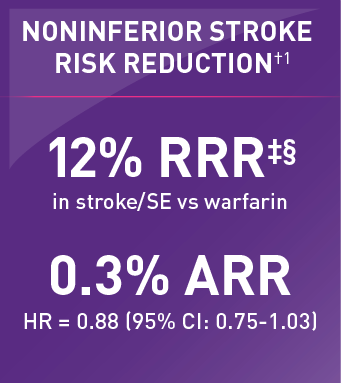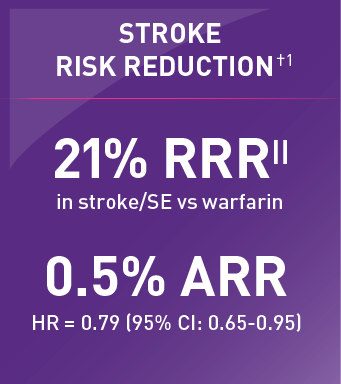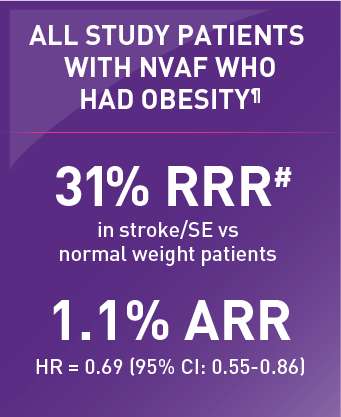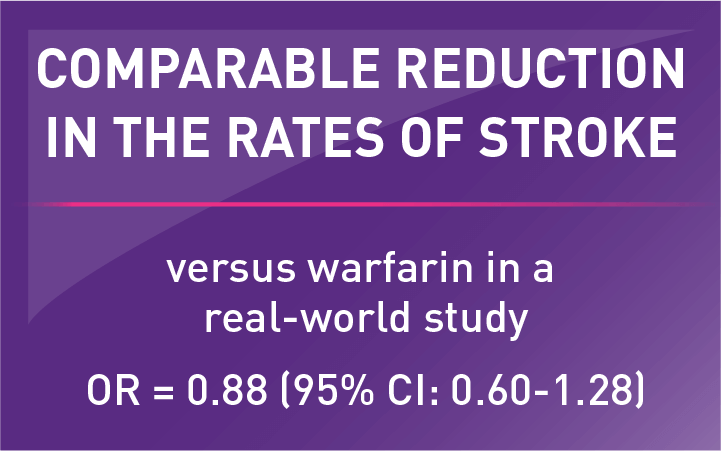For US Healthcare Professionals
ITT population
NONINFERIORITY IN ITT POPULATION†1
ITT population
(n=14,171)

- Stroke or SE event rates per 100 patient-years were 2.4 in patients taking warfarin and 2.1 in patients taking XARELTO®1
- XARELTO® demonstrated noninferiority versus warfarin, but superiority was not established. There are limited data on the relative effectiveness of XARELTO® and warfarin in reducing the risk of stroke and SE when warfarin therapy is well controlled1
†Superiority was achieved in the safety, as-treated population in a secondary analysis of patients taking at least 1 dose of XARELTO®. The ITT population demonstrated noninferiority.
‡A 12% RRR in stroke or SE was observed in patients receiving XARELTO® (n=269) versus warfarin (n=306), HR = 0.88 (95% CI: 0.74-1.03), P<0.001. RRR was calculated using 1 minus the HR.
§Not statistically significant.
Safety, as-treated population
SUPERIORITY IN SAFETY, AS-TREATED POPULATION‡1
Safety, as-treated population
(n=14,143)

- Stroke or SE event rates per 100 patient-years were 2.2 in patients taking warfarin and 1.7 in patients taking XARELTO®1
- A superiority analysis was conducted in the safety population during treatment (safety, as-treated population), which included patients who received at least 1 dose of study drug and were followed for events, while they were receiving treatment or within 2 days after discontinuation1
- XARELTO® demonstrated noninferiority versus warfarin, but superiority was seen in the safety, as-treated population. There are limited data on the relative effectiveness of XARELTO® and warfarin in reducing the risk of stroke and SE when warfarin therapy is well controlled1
- The conventional method for establishing superiority is in the ITT population using data from all patients who were randomized to treatment, and this analysis did not support the superiority of XARELTO® to warfarin3
†Superiority was achieved in the safety, as-treated population in a secondary analysis of patients taking at least 1 dose of XARELTO®. The ITT population demonstrated noninferiority.
||A 21% RRR in stroke or SE was observed in patients receiving XARELTO® (n=189) versus warfarin (n=243), HR = 0.79 (95% CI: 0.65-0.95), P=0.02. RRR was calculated using 1 minus the HR.



